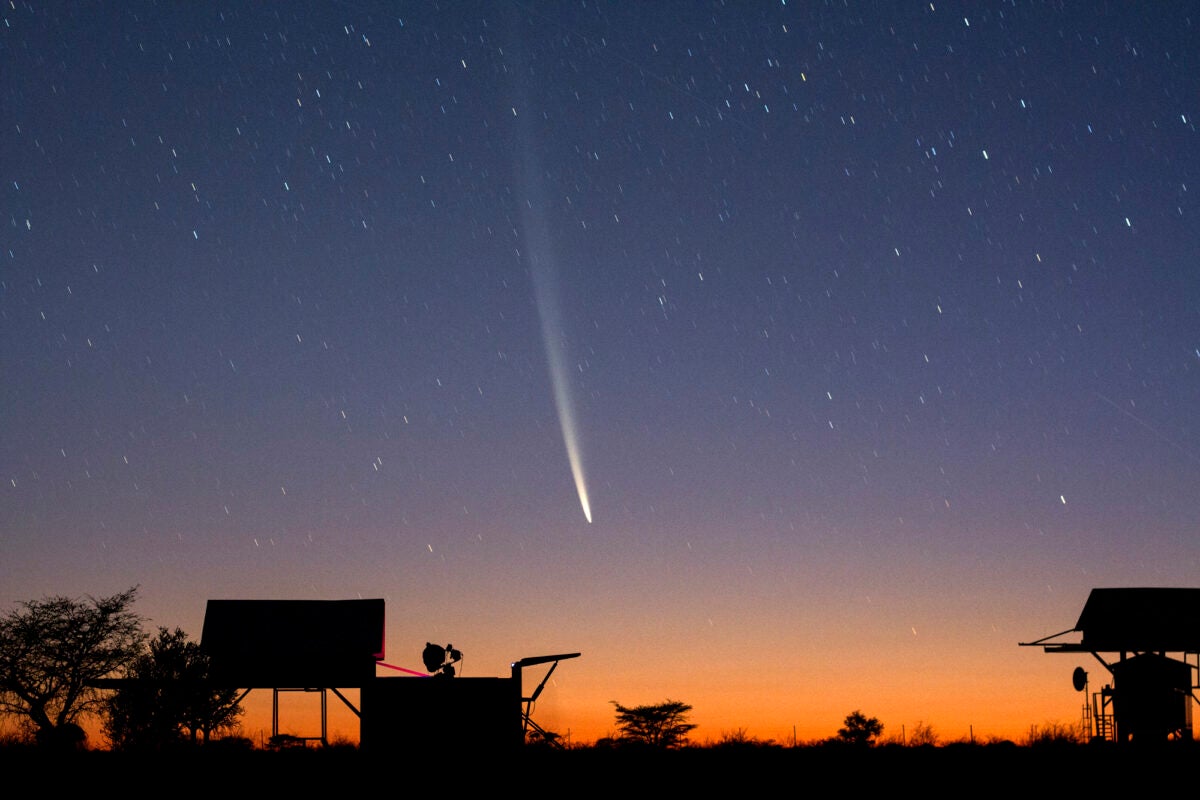
After putting on a show in the predawn sky earlier this month, Comet Tsuchinshan-ATLAS (C/2023 A3) was eventually lost in the glare of the Sun. But now that it has crossed behind the Sun from our point of view, it is emerging in the early evening sky and becoming more visible every night as it speeds away from the Sun.
The following table will tell you when and were to look. Although these figures are specific for Tucson, Arizona, they should be accurate enough to help you spot the comet, whatever your location.
| October date | Minutes past sunset | Comet altitude | Comet azimuth | Moon illumination (percent) | Moon altitude |
| 12 | 15 | 12° | 260° | 74 | 28° |
| 13 | 15 | 17° | 258° | 83 | 24° |
| 14 | 15 | 21° | 255° | 91 | 20° |
| 15 | 15 | 25° | 253° | 97 | 14° |
| 16 | 15 | 28° | 251° | 100 | 7° |
| 17 | 30 | 29° | 252° | 100 | 2° |
| 18 | 30 | 31° | 250° | 96 | –5° |
| 19 | 30 | 34° | 248° | 90 | –12° |
| 20 | 30 | 36° | 247° | 83 | –19° |
Azimuth tells us where the comet is with relation to the cardinal directions (north, south, east, west). An azimuth of 0° is north, and 270° is due west. Altitude is how high the comet is above the horizon. So, for example, if you’re searching for the comet 15 minutes after sunset on the 12th, look 10° south of west and 12° above the horizon.
You can measure angular distances on the sky by hand — literally. If you make a fist and hold it at arm’s length, its distance from top to bottom measures approximately 10°. So, again on the 12th, at 15 minutes past sunset, the comet will be just a bit higher than your fist if you place the bottom of your fist along the western horizon.
Note that although moonlight will make viewing the comet more difficult, the Moon during this span of dates will be in the eastern sky while the comet is in the west.
Good luck, and send your photos to readergallery@astronomy.com — we’ll feature the best ones on the website and perhaps in the magazine.









